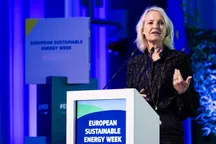There is time until mid-December to participate in the Deep Tech Venture Builder Programme Call 2025, the first edition of the call promoted by EIT Health to transform academic research projects in deep-tech into businesses. The call aims to support up to 20 projects in the first phase and up to 10 in the second, offering a support ecosystem that includes mentoring, a health innovation network, and structured funding.
The program, lasting 10 months, is divided into two main phases. The first phase focuses on team creation, entrepreneurial idea development, and prototyping, aiming to provide participants with the skills necessary to start new entrepreneurial initiatives in the health technology sector. The second phase aims to develop a minimum viable product and validate the market. Training courses, both online and in-person, cover six fundamental modules, including entrepreneurial mindset and technology transfer strategies. Academic teams or researchers collaborating with a venture builder can apply.
What the Deep Tech Venture Builder Programme Call 2025 Funds
The call focuses on transforming academic projects into real businesses active in the MedTech and Digital Health sectors. To achieve this, the program is structured in two phases: the first, dedicated to team creation and entrepreneurial idea development, offers a series of courses and access to expert mentors. The second phase focuses on creating a minimum viable product and market validation.
The beneficiaries of the call are academic teams that, together with a venture builder, carry out promising projects. It is important to specify that, while for phase 1 the beneficiaries are the legal entity where the assets resulting from scientific research and/or innovation activities reside (together with a venture builder), in phase 2 the consortium must expand. To access Phase 2, the consortium must include the academic or research institution where the project resides, a Venture Builder, the newly formed startup, and a third organization located in an EU country different from that of the startup or Venture Builder. This third partner can be a healthcare organization, another research institution, or a technology provider that provides the necessary resources for solution validation.





